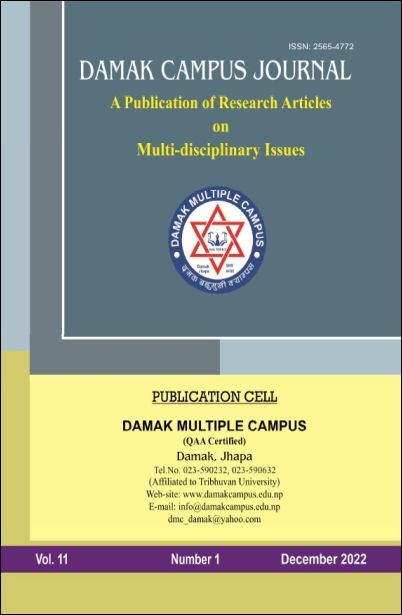An Exposure to Natural Background Radiation in Eastern Nepal
DOI:
https://doi.org/10.3126/dcj.v11i1.63478Keywords:
Ionizing radiation, Cosmic radiation, Effective dose, G.M. Counter, Gaussian distributionAbstract
Monitoring natural background radiation is important to locate the high background area. The objective of the work is to find the average background radiation in the Morang district and to observe the effects of cosmic radiation at high altitudes. In this study, background radiation was measured in 17 different municipalities of Morang with the help of a GM counter of model GMC-300E plus. The result showed that the annual effective dose of Morang was 0.24±0.02mSv/y and was below the recommended value of 1 mSv/y set by ICRP for public health. The radiation level was slightly higher in the hospital area. The frequency distribution indicates that there is a good fit of observed data with a known Gaussian distribution. The variation of background radiation with an altitude from 381 to 2550m showed an increasing trend. The best-fitted line depicted that background radiation increased by 16% with 1000m in altitude and it was slightly higher than the literature’s result of 10-12%. The comparative study of the present work showed that the effective dose was the least value in the Morang (0.24mSv/y) and the highest in the Pokhara Valley (0.81mSv/yr).




